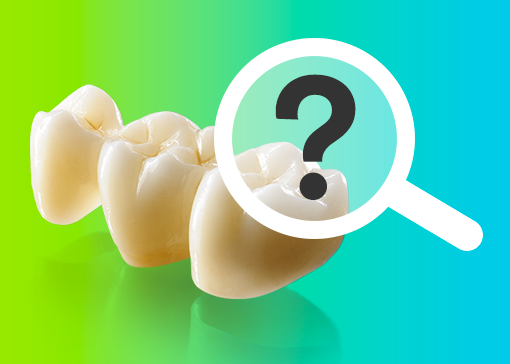Managing caries and motivating change, part 2: Motivational interviewing
How do you motivate your patients? Discover how caries risk assessments and motivational interviewing tactics can help you connect with…


Dentists and technicians have the same goal: to do it right the first time. Learn how checklists can help standardize communication and optimize treatment quality – both in the office and the lab.
Where will shortcuts in your indirect restoration procedure take you? Unfortunately, the final destination could be failure. This is exactly what happened to me when I accepted a case with a shade prescription and impression quality barely sufficient to produce a temporary restoration. The adjacent teeth were not properly reproduced in the impression and relevant shade details were missing. However, I decided against taking the long route, i.e., asking the dentist to have the patient return to retake the impression. Instead, I pushed my luck and produced a crown based on the records I had. The fit and shade match of the resulting restoration were so bad that a remake was the only acceptable option – which included the second impression and shade determination procedure I had tried to avoid.
But an earlier retake would still have been little more than the lesser of two evils. The preferred way to complete an indirect restoration is to do it right the first time – every time. Thankfully, this is not mission impossible, but an achievable goal – provided all members of the restorative team opt for careful planning, structured workflows and flawless communication.
Unfortunately, many dental practitioners, assistants and technicians seem to struggle with the communication part of the equation. Quite often, the laboratory receives an incoming order with only an impression and bite registration, plus written information about the type of restoration (“bridge 14-16”), the determined tooth shade (“A3”), the desired material (“ceramics”) and the requested delivery date. Other relevant details – like which type of ceramic material or intraoral photographs etc. – are missing. When the restoration arrives in the dental office, the team struggles with a lack of information from the lab as well. Too often, not a single word is left about the selected restorative material, the pre-treatment measures already carried out (sandblasted or etched), and the steps still to be taken. When this important information is missing, the team partners have two options: to guess what is to be done, or ask for details. While the former option more often than not compromises quality (of the restoration or the bond), the latter is time-consuming and unpleasant for everyone involved.
The better strategy is to sit down with the lab or practice partner and establish a standardized way of communicating. The checklists created as part of the Success Simplified program a great starting point.
If you fill out the order form completely in your dental office, you ensure that the dental laboratory receives all the essential information to start producing the restoration. The form should be provided together with clinical photographs, a face bow, a picture of the prepared teeth, or photos with the selected tabs of the shade guide placed next to the teeth (figures 2 through 4).

Example of a completed order form for the complex case below. Clinical images courtesy of Prof. Daniel Edelhoff

Intraoral photograph of the quadrant to be restored after tooth preparation.
 |
 |
| Intraoral photographs with shade tabs. | |
This order form helps the team members capture all the relevant details. For example, let us explore an extreme case: A patient with a specific type of implant, a dysfunction dynamic occlusion through a lack of canine guidance, and a non-vital, discolored incisor warrants a complete reconstruction with all-ceramic materials. Unfortunately, the patient also suffers from allergies and is getting married in two weeks’ time. Without detailed information, including a functional analysis, the implant pass, clinical photographs documenting the condition of the teeth (e.g., the level of discoloration and an allergy-related material suggestion) there is no chance for the dental technician to produce anything but failure. Even in less extreme cases, we need to be aware of the fact that every restoration is a custom-made medical product, and its quality is highly dependent on the information provided. Using our checklist, the dental office ensures that this essential information is thorough and complete, and the dental technicians can make full use of their skills.

Complex clinical situation with a rare type of implant and discoloration of prepared teeth.

Occlusal view of a patient’s maxilla following an augmentation procedure in the anterior region and preparation of the canines and most of the posterior teeth.
All clinical images courtesy of Prof. D. Edelhoff
Information essential for try-in and restoration placement is transferred to the dental office with the aid of the Cementation Guide. It specifies the type of restorative material at hand, informs the practice team of required pre-treatment measures and whether this pre-treatment has already been completed in the dental laboratory, along with cement recommendations. With this information, it is easy to create ideal preconditions for a durable bond and good esthetics.

Completed cementation guide arriving with the final restoration.
My own experience shows that cementation is one of the most critical steps in the restoration procedure. Unlike impression taking or creating a temporary restoration, the cementation procedure cannot simply be repeated or corrected if a mistake is made, such as performing the wrong pre-treatment or selecting the wrong cement. The workflow needs to be precisely adjusted to the restorative material in use and the preparation design selected. Therefore, the use of this guide is strongly recommended.

The last part of this series focuses on the dental practitioner’s view and will shed light on additional checklists available.
Read part 1 , “What your dental technician does not dare to tell you” here, and part 3, “Ways to optimize the teamwork with the dental technician”, of this article series here.

How do you motivate your patients? Discover how caries risk assessments and motivational interviewing tactics can help you connect with…

Caries is a complicated multifactorial disease. In this two-part series, explore how caries risk assessments can help improve evaluation and…

Zirconia may be part of your everyday vocabulary, but how much do you know about this ceramic material? Learn more…